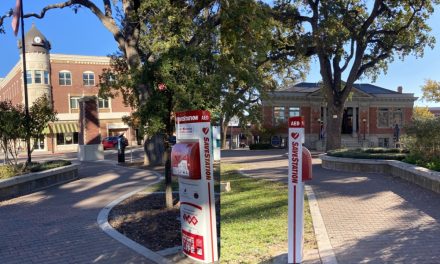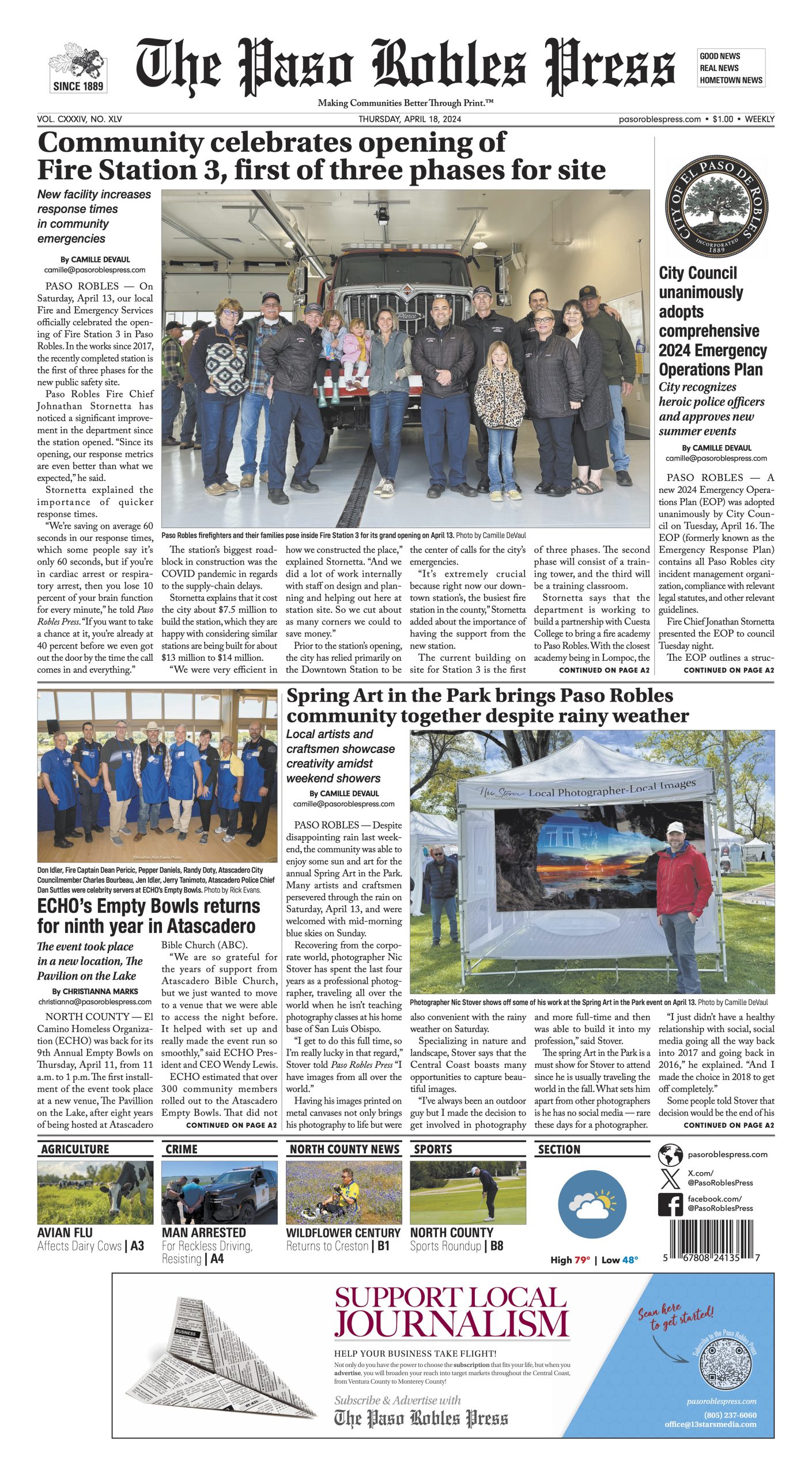This past summer, at the recommendation of Fire Chief Johnathan Stornetta, the City of Paso Robles declared that the Salinas Riverbed posed a significant fire threat and authorized the Fire Department to proceed with the riverbed fuel reduction project. The significant buildup of underbrush in the Salinas, coupled with homeless people building campfires and shelters in the riverbed, has contributed to the growing number of fires in Paso Robles.
The PRFD used masticators — heavy machinery designed to clear brush and small trees — to create fire breaks and buffer zones on approximately 85 acres of riverbed that runs through the heart of Paso Robles. Masticators chewed underbrush in to mulch to create a 150-foot safety zone between the river and North and South River Roads. The PRFD also cleared 150-foot wide fuel breaks that run perpendicular to the river. Afterward, hand crews trimmed trees along the riverbed to reduce low hanging limbs that can contribute to the spreading of fire.
In response to Council member John Hamon’s question on if there was a plan to keep the brush from coming back, Stornetta said that the City is currently working on a maintenance plan. The fire chief explained that undergrowth serves to combat erosion. Stornetta said that the City has applied to the State Council for a $300,000 grant to fund the maintenance program. Answering a question from Council member Maria Garcia, Storenetta said it appears that vegetation has been growing unchecked since the 1970s.
Stressing the importance of continual maintenance, Stornetta explained to the Council that live fuel moisture levels are the “single most important factor in determining the probability of ignition and fire spread intention.” He said that in spite of the past year’s rainfall, the live fuel moisture levels were still critically low and it would take multiple years of heavy rainfall to make an overall impact on them.
“We can expect with these critical fuel moistures, that any fire we have down there will have a rapid or critical rate of spread and that’s all wind-dependent,” Stornetta said.
Work crews have not reported any problems with the homeless in the riverbed. The transient population gathered their belongings and evacuated the affected area, though they may return once the work is completed.











